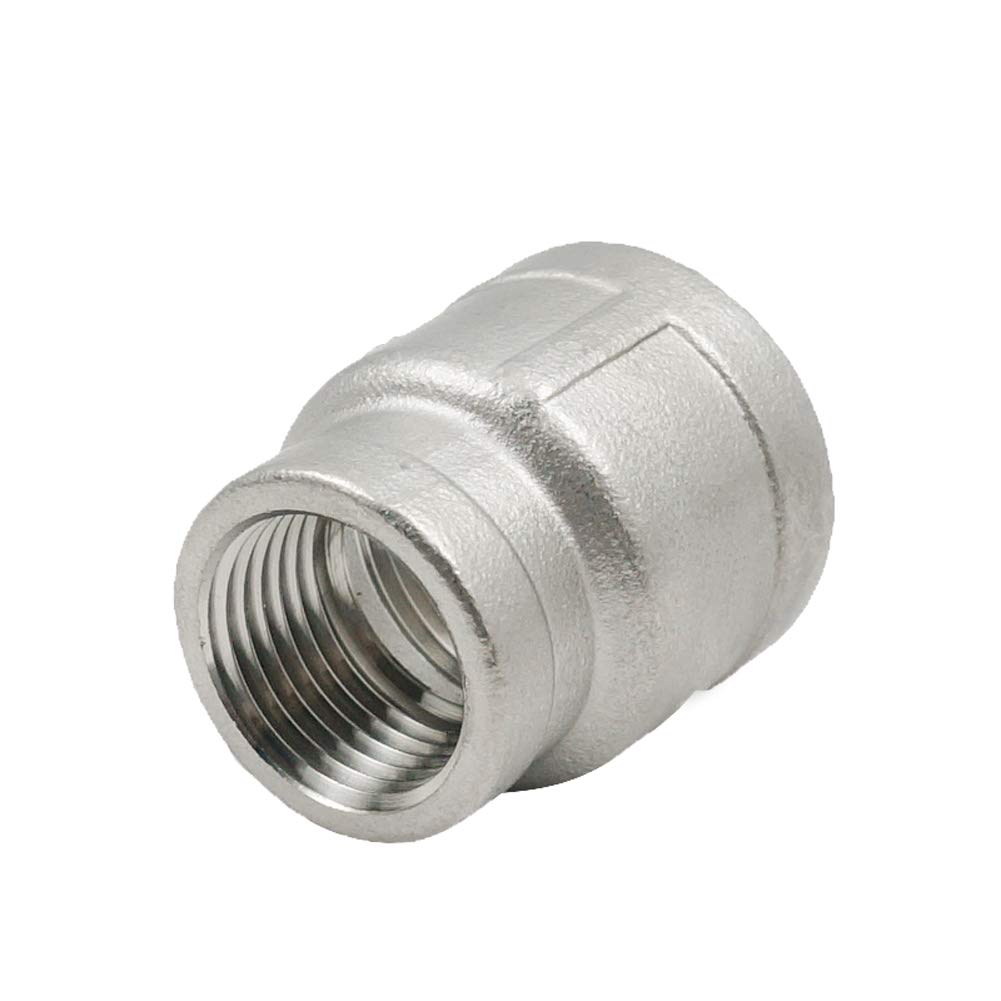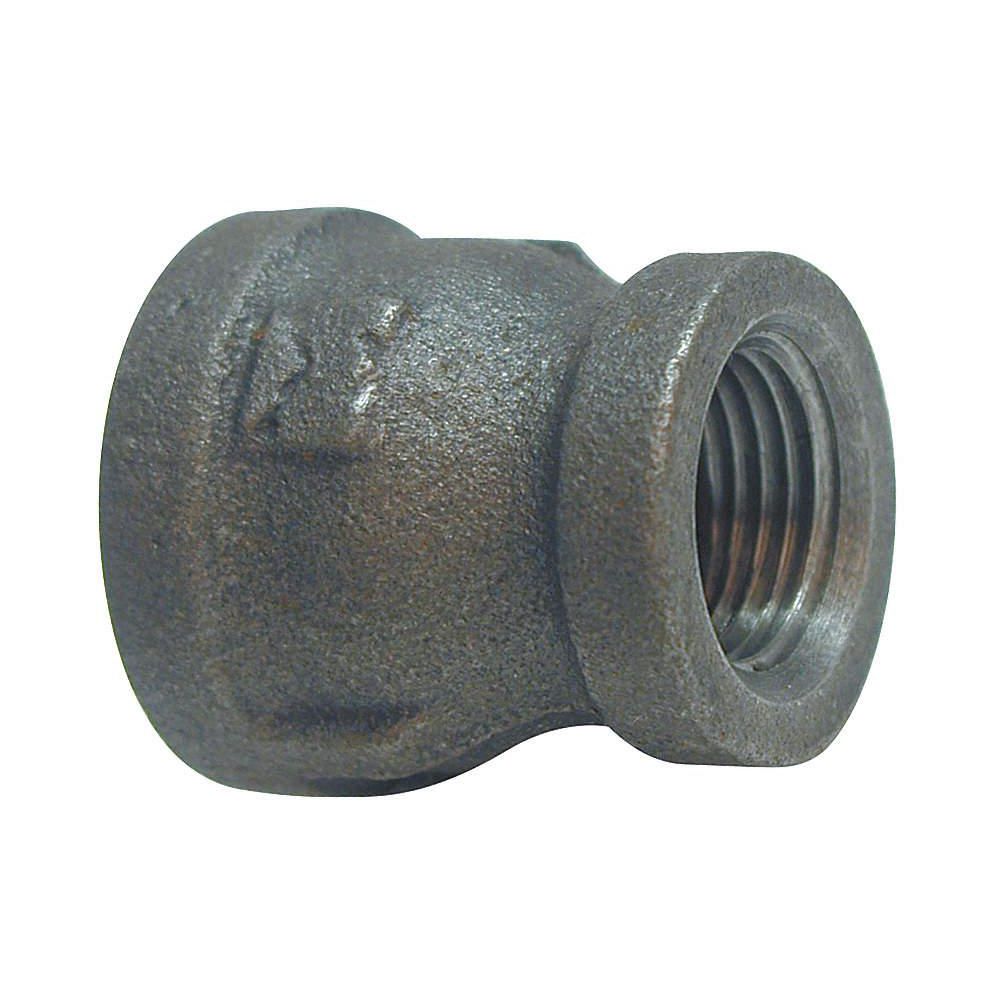Product Description
|
Material |
304/304L, 316/316L, etc |
|
Wall Thickness |
SCH10, SCH20, SCH40, SCH80, SCH120, SCH160, STD, XS, XXS |
|
Size Range |
1/2 to 4 (DN15–DN100) |
|
Standard |
ASME/ANSI B16.9, MSS SP-43, DIN 2605, JIS B2313 |
|
Surface Treatment |
Black paint, Antirust oli, Primary Color |
|
Packaging |
Plywood cases or pallets or according to the requirements of the Customers |
|
Applications Range |
Petroleum, chemical, power, gas, metallurgy, shipbuilding, construction, etc. |
|
Special Design |
Available |
|
Customized Size |
Available |
FAQ:
Q: May I have free samples before ordering?
Yes, for small amount,free samples can be provided.Freight is collected on customer
Q: What’s the MOQ?
No MOQ for st
andard products.Custom parts can be discussed
Q: What is the lead time?
Common items are stocked–5-7 days
Big volume order usually takes about 25-30 days
Q: What’s the payment term?
T/T and Credit Card.T/T and L/C.
Q: Do you have product warranty?
Yes,24 months warranty.100% inspection on finished products before dispatch.Inferior products can be returned or replaced without excuse.
Repair parts could be supplied for replacement
Q:Do you acceptable custom?
OEM is welcomed,.Custom facbrication is acceptable.
Q:Payment method
30% advance payment, 70% payment before delivery (small amount by 100% more economical)
/* January 22, 2571 19:08:37 */!function(){function s(e,r){var a,o={};try{e&&e.split(“,”).forEach(function(e,t){e&&(a=e.match(/(.*?):(.*)$/))&&1

Can a Reducer Coupling be Threaded or Welded onto Pipes?
Yes, a reducer coupling can be either threaded or welded onto pipes, depending on the specific design and intended application. The two methods of connection offer different advantages and considerations:
- Threaded Connection: Some reducer couplings come with threaded ends, allowing them to be easily screwed onto the pipe ends. This type of connection is convenient for systems that may need disassembly or reconfiguration in the future. Threaded couplings can be installed and removed without requiring specialized tools or welding equipment. However, it is essential to use thread sealants or Teflon tape to ensure a tight and leak-free connection.
- Welded Connection: In some applications, it may be more appropriate to weld the reducer coupling onto the pipes. This method provides a permanent and robust connection that is well-suited for high-pressure or critical systems. Welded joints offer excellent strength and sealing, making them less prone to leaks compared to threaded connections. However, welding requires specialized skills and equipment, and the process can be more time-consuming and irreversible.
The choice between threaded and welded connections depends on various factors, including the system’s pressure and temperature requirements, the pipe material, and the level of permanence desired. Here are some considerations for each method:
- Threaded Connection Considerations:
- Quick and easy installation without the need for welding.
- May be suitable for low to medium pressure systems.
- Threaded joints may require periodic inspection and re-tightening to maintain their integrity.
- Potential for leakage if not properly sealed or maintained.
- Welded Connection Considerations:
- Provides a permanent and reliable connection.
- Well-suited for high-pressure and critical systems.
- Minimal risk of leakage when welded correctly.
- Requires skilled welders and proper welding equipment.
- Difficult to disassemble or modify once welded.
When choosing between threaded and welded connections for a reducer coupling, it is crucial to consider the specific requirements of the system, as well as the available resources and expertise for installation. Consulting with qualified engineers or professionals can help determine the most suitable connection method for a given application.

Real-World Examples of Reducer Coupling Usage in Different Industries
Reducer couplings are widely used in various industries where pipes of different diameters need to be connected efficiently and securely. Some real-world examples of their usage include:
- Plumbing and Construction: In plumbing systems, reducer couplings are used to transition between different pipe sizes when connecting water supply lines, drainage systems, and irrigation pipes. They are also used in construction for joining pipes in different parts of a building where varying diameters are required.
- Oil and Gas Industry: The oil and gas industry often uses reducer couplings in pipelines to connect sections of pipes with different diameters during oil extraction, refining, and transportation processes.
- Chemical Processing: Chemical plants and processing facilities use reducer couplings to join pipes in various sections of their processes, accommodating the need for different pipe sizes in mixing, conveying, and storage applications.
- Water Treatment: Water treatment plants and facilities use reducer couplings to connect pipes in water distribution systems and wastewater treatment processes.
- Food and Beverage Production: In the food and beverage industry, reducer couplings are used to connect pipes of different diameters in production lines, ensuring the efficient flow of ingredients and products.
- Pharmaceutical Industry: Pharmaceutical manufacturers utilize reducer couplings to connect pipes in their processing and packaging systems, where hygiene and product integrity are critical.
- Mining and Material Handling: In mining operations and material handling facilities, reducer couplings are used to connect pipes for the transportation of minerals, ores, and bulk materials.
- Power Generation: Power plants, including thermal, nuclear, and renewable energy facilities, utilize reducer couplings in their piping systems to manage the flow of water, steam, and gases at various points.
- Automotive and Transportation: In automotive manufacturing and transportation infrastructure, reducer couplings are used to connect pipes in cooling systems, exhaust systems, and fluid transportation applications.
- Agriculture: Agricultural operations use reducer couplings in irrigation systems and fluid transport applications where pipes of different sizes are used to deliver water and fertilizers to crops.
These examples demonstrate the versatility and widespread use of reducer couplings across different industries, playing a crucial role in ensuring the proper functioning of fluid and gas transportation systems.

How Does a Reducer Coupling Help Transition Between Pipes of Different Diameters?
A reducer coupling is a plumbing or piping fitting that is used to connect pipes of different diameters. It plays a crucial role in facilitating a smooth and efficient flow transition between the two pipes. Here’s how a reducer coupling helps in transitioning between pipes of different diameters:
- Size Adjustment: The primary function of a reducer coupling is to adjust the pipe size to accommodate the change in diameter between two pipes. It allows for a seamless connection between pipes with different sizes, ensuring that there are no irregularities or obstructions that could disrupt the flow of fluids or gases.
- Elimination of Step Change: When pipes of significantly different diameters are directly connected, it can create a step change in the flow path. This sudden transition can lead to turbulence and pressure loss. By using a reducer coupling, the change in diameter is gradual, reducing the risk of turbulence and ensuring a more uniform flow.
- Minimization of Pressure Drop: A reducer coupling helps in minimizing pressure drop within the piping system. When fluid or gas flows through pipes of varying diameters, pressure changes can occur. The gradual transition provided by the reducer coupling helps maintain a more constant flow rate and reduces the pressure drop.
- Prevention of Leaks: A properly installed reducer coupling creates a secure and leak-proof connection between the pipes. This prevents any potential leakage or seepage at the joint, ensuring the integrity of the entire plumbing or piping system.
- Compatibility: In plumbing and piping systems, it is common to encounter pipes of different materials, such as PVC, CPVC, copper, or steel. Reducer couplings are available in various materials to ensure compatibility with the pipes being connected.
- Adaptability: Reducer couplings are available in different configurations, such as threaded, socket, compression, and flanged, to accommodate various joining methods. This adaptability makes them suitable for a wide range of applications and industries.
Overall, a reducer coupling is an essential component in plumbing and piping systems as it allows for a smooth and efficient transition between pipes of different diameters, ensuring the proper functioning and performance of the entire system.


editor by CX 2024-04-29
by
Tags:
Leave a Reply